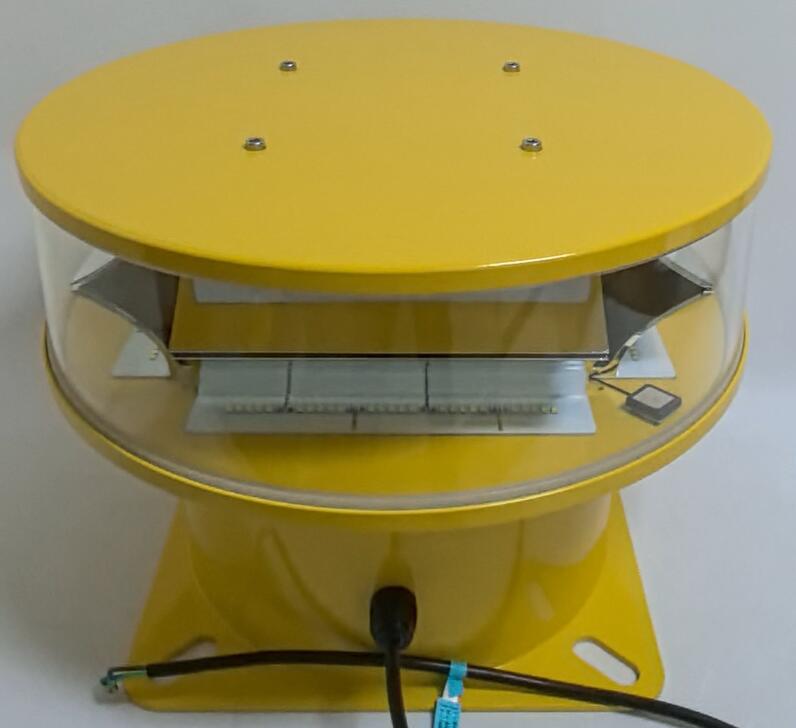Aviation lamps for towers play a pivotal role in modern aviation safety, acting as silent sentinels that ensure the safe navigation of aircraft around obstacles. These specialized lighting systems are essential for marking tall structures such as communication towers, wind turbines, and skyscrapers, especially in areas with heavy air traffic or challenging weather conditions. Their importance cannot be overstated in a world where the airways are increasingly crowded and urban infrastructure continues to grow taller and denser.
What Is an Aviation Lamp for Tower?
An aviation lamp for tower is a highly engineered lighting device designed to alert pilots to the presence of tall structures. These lamps are typically installed on the tops and mid-sections of towers and must comply with stringent international regulations. Their primary purpose is to emit bright, distinct light signals that are visible from significant distances, even in adverse conditions such as fog, rain, or snow.
The design of these lamps often involves advanced technologies to maximize efficiency, durability, and visibility. LED technology, for instance, has become a cornerstone of modern aviation lamps due to its longevity and energy efficiency. With operational lifespans that far exceed traditional incandescent bulbs, LED-based aviation lamps reduce maintenance costs while ensuring consistent performance.
Key Features of an Aviation Lamp for Tower
An effective aviation lamp for tower incorporates several critical features:
High Visibility
Aviation lamps are designed to be visible over long distances. They typically emit light in red or white, depending on their position and the regulations in the area. Red lights are generally used for nighttime operations, while white lights are employed for daytime visibility.
Weather Resistance
These lamps are built to endure extreme weather conditions, including high winds, heavy precipitation, and temperature fluctuations. Robust enclosures and waterproof designs ensure they remain operational in the harshest environments.
Energy Efficiency
With the adoption of LED technology, aviation lamps have become increasingly energy-efficient. This is particularly important for remote installations where power supply options may be limited.

Long Lifespan
Modern aviation lamps are engineered to last for years, reducing the need for frequent replacements and minimizing maintenance efforts.
Compliance with Regulations
Aviation lamps for towers must meet stringent standards set by organizations like the International Civil Aviation Organization (ICAO) and the Federal Aviation Administration (FAA). Compliance ensures that the lights perform as intended to guarantee aviation safety.
| Aviation Lamp for Tower | DFCR5 |
Applications of an Aviation Lamp for Tower
The uses of aviation lamps are diverse, as they are essential for marking structures that could pose hazards to aircraft. Some common applications include:
Communication Towers
Radio, television, and cell phone towers often rise high into the sky, making them potential hazards for low-flying aircraft. Aviation lamps ensure these towers are easily visible, preventing collisions.
Wind Turbines
As renewable energy becomes more prevalent, wind farms are increasingly common. Wind turbines, often installed in remote or offshore locations, must be equipped with aviation lamps to alert pilots flying nearby.
Skyscrapers and High-rise Buildings
Urban centers with towering skyscrapers rely on aviation lamps to mark their tallest points. These lamps are especially critical in cities located near busy flight routes.
Industrial Chimneys
Industrial facilities with tall chimneys or exhaust stacks use aviation lamps to maintain compliance with aviation safety guidelines.
The Technological Advancements in Aviation Lamps
The evolution of aviation lamps has seen significant technological advancements, with a focus on improving efficiency, performance, and sustainability. LED technology stands out as a transformative development, offering unparalleled brightness with minimal energy consumption.
Moreover, many aviation lamps now feature smart technology, allowing remote monitoring and control. Operators can receive real-time updates on the lamp’s status, ensuring immediate action can be taken if a malfunction occurs. This reduces downtime and enhances overall safety.
Solar-powered aviation lamps are another innovation gaining traction. These lamps are ideal for installations in remote locations, eliminating the need for extensive wiring or a constant power supply. By harnessing solar energy, they provide a sustainable and cost-effective solution for marking towers.
Challenges and Maintenance Considerations
Despite their robust design, aviation lamps for towers face several challenges. Harsh weather conditions, physical damage from birds or debris, and electrical issues can all impact their functionality. Regular maintenance is essential to ensure these lamps continue to operate effectively.
Maintenance typically involves inspecting the lamps for damage, cleaning the lenses to maintain brightness, and replacing any faulty components. For towers located in remote areas, routine checks may require specialized equipment or even helicopters, increasing the complexity and cost of upkeep.
Importance of Compliance and Standards
The aviation industry operates under strict safety standards, and aviation lamps for towers are no exception. Compliance with international regulations is critical to ensure the safety of both aircraft and people on the ground. The ICAO and FAA, among others, provide detailed guidelines on the design, installation, and maintenance of these lamps.
For example, ICAO mandates the use of red lights for structures taller than 45 meters at night, while white strobes are required for daytime marking. Non-compliance can lead to serious consequences, including legal penalties and increased risk of accidents.
An aviation lamp for tower is more than just a light—it is a vital tool for ensuring the safety of aviation operations worldwide. With advancements in technology and a growing emphasis on sustainability, these lamps continue to evolve, offering improved performance and reduced environmental impact.
From marking communication towers to enhancing the visibility of wind turbines, aviation lamps play an indispensable role in safeguarding our skies. As urban landscapes grow and air traffic increases, the importance of these silent guardians will only continue to rise.